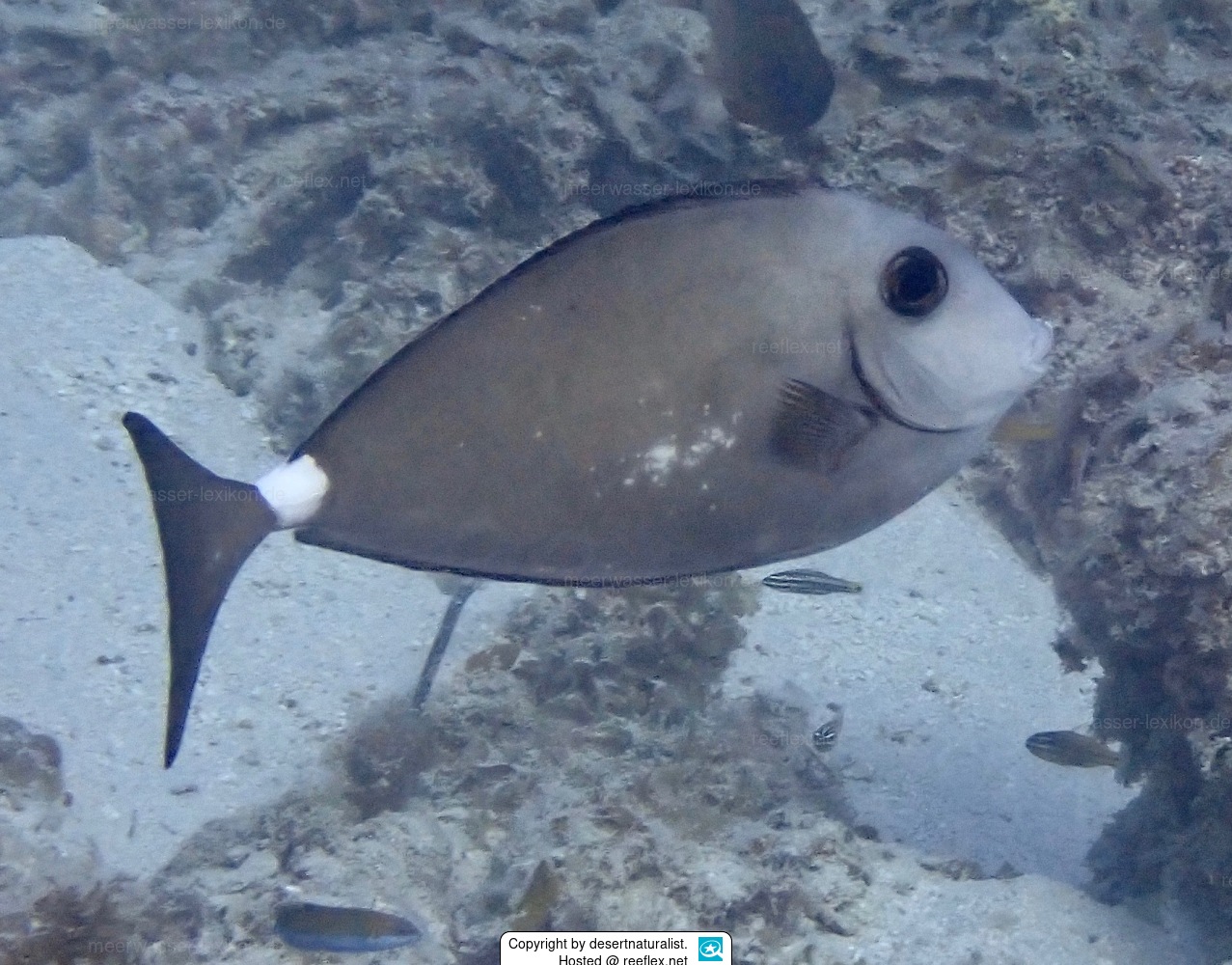Info
Naso fageniis a large pale gray to gray-brown surgeonfish that becomes paler on the ventral side, with a short, rounded projection on the snout above the upper lip (absent in juveniles), two immobile bony plates on either side of the caudal peduncle.
Adults have small dark spots on the body, juveniles have a white band around the caudal peduncle between the caudal plates.
There is varying information on the habitat of the surgeonfish, it is said to prefer coral and rocky reefs, often deeper outer reef slopes in this case, another source sees the doc in deeper non-reef environments
The sexes live separately and there is evidence of sexual dimorphism in the tail blades, which are relatively larger in males.
Dr. Randall states in his book "Coastal Fishes of the Oman" on page 390 that the fish lives in turbid water and it is not easy to approach.
Synonyms:
Cyphomycter cavallo Smith, 1955
Cyphomycter fageni (Morrow, 1954)
Rhinodactylus baixopindae Smith, 1957
The surgeonfishes (Acanthuridae), popular in marine aquaristics, are also called surgeonfishes.
They have horn-like blades in front of the tail root, they use as mainly defensive weapon (defense) against predators, but this sharp weapon is also used in fights among themselves.
Deep cuts in the body of opponents can cause permanent injuries, but often death occurs immediately.
If surgeonfishes are to be kept in pairs in an aquarium, fights between the fishes can be the order of the day, we could observe this several times with the very popular Hawaiian surgeonfish (Zebrasoma flavescens).
The scalpel-like blades can cause deep cuts, this is also true for the careless aquarist who wants to touch or catch the fish with unprotected hands.
Another problem can occur if one wants to catch surgeonfish with a landing net and transfer them after catching, the horn blade can easily get caught in the net.
Caution: Careless handling of the animal can cause deep cuts!
Adults have small dark spots on the body, juveniles have a white band around the caudal peduncle between the caudal plates.
There is varying information on the habitat of the surgeonfish, it is said to prefer coral and rocky reefs, often deeper outer reef slopes in this case, another source sees the doc in deeper non-reef environments
The sexes live separately and there is evidence of sexual dimorphism in the tail blades, which are relatively larger in males.
Dr. Randall states in his book "Coastal Fishes of the Oman" on page 390 that the fish lives in turbid water and it is not easy to approach.
Synonyms:
Cyphomycter cavallo Smith, 1955
Cyphomycter fageni (Morrow, 1954)
Rhinodactylus baixopindae Smith, 1957
The surgeonfishes (Acanthuridae), popular in marine aquaristics, are also called surgeonfishes.
They have horn-like blades in front of the tail root, they use as mainly defensive weapon (defense) against predators, but this sharp weapon is also used in fights among themselves.
Deep cuts in the body of opponents can cause permanent injuries, but often death occurs immediately.
If surgeonfishes are to be kept in pairs in an aquarium, fights between the fishes can be the order of the day, we could observe this several times with the very popular Hawaiian surgeonfish (Zebrasoma flavescens).
The scalpel-like blades can cause deep cuts, this is also true for the careless aquarist who wants to touch or catch the fish with unprotected hands.
Another problem can occur if one wants to catch surgeonfish with a landing net and transfer them after catching, the horn blade can easily get caught in the net.
Caution: Careless handling of the animal can cause deep cuts!







 desertnaturalist
desertnaturalist


















